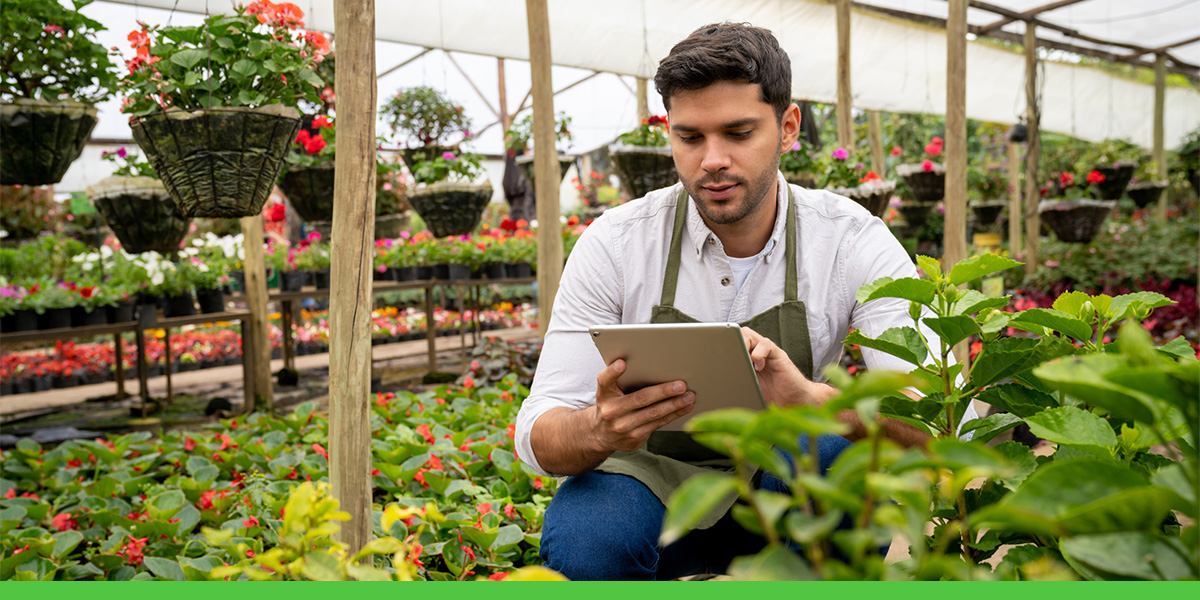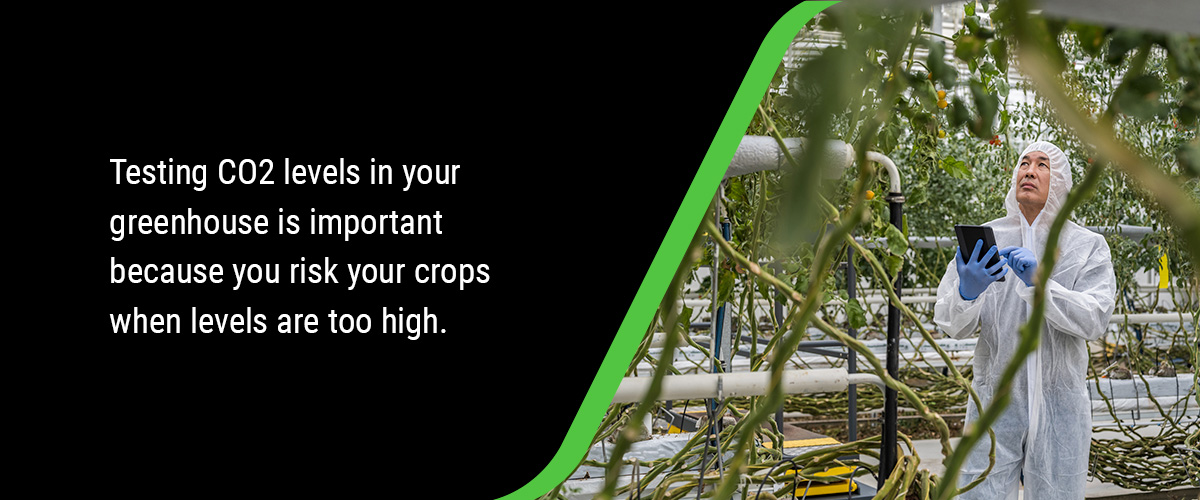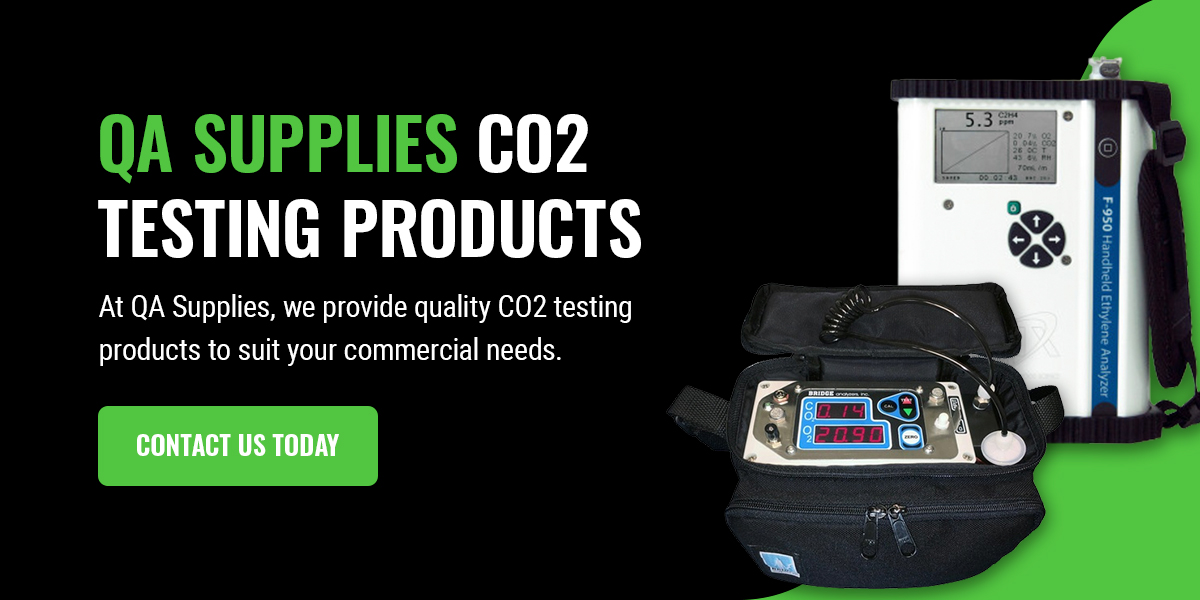The Role of Carbon Dioxide in Greenhouse Management
Oct 20th 2023

Carbon dioxide — or CO2 — is a colorless, non-toxic, non-flammable gas used in everyday products and processes. CO2 is also a gas that occurs naturally in the air. The concentration of CO2 in the air has been increasing due to high emissions from various industries, and the gas is often under scrutiny and a point of concern for environmentalists.
However, CO2 is vital to humans and the natural world and it regulates the earth's temperature. The human breathing mechanism depends heavily on CO2 and many green industries also rely on CO2 — including greenhouses and other food production sectors.
CO2 is also essential to photosynthesis — the process in which plants use light energy to convert water or CO2 into oxygen and sugars. Supplementing carbon dioxide is a big part of greenhouse management because of the gas's key role in plant growth.
Importance of CO2 in Plant Growth
Optimizing your greenhouse is paramount for managing costs, increasing plant growth, improving procedures and ensuring plant health. Understanding the role CO2 plays in greenhouse management can help increase yield and efficiency, plus reduce costs.
CO2 is essential for plant growth. The levels of CO2 in the air directly impact how quickly and well plants grow. The general rule of thumb is that plants grow faster in an environment that has a higher concentration of CO2.
There are other advantages of increasing and controlling carbon dioxide levels in plant growth, such as:
- Increased growth rates: Supplementing with CO2 increases the size and quantity of flowers. You can harvest more crops every year since plants reach maturity sooner. This is an excellent way of increasing product quality and sales value in flower production.
- Reduced costs: You may reduce costs over winter as supplementing CO2 provides additional heat through burners. You can also save on heating and fertilization costs thanks to shorter growing cycles.
- Better conservation: You can reduce your water usage during crop production because supplementing CO2 reduces transpiration, the process in which plants lose water through evaporation from their leaves.
Impacts of Optimized CO2 Levels
You can enhance plant productivity and increase growth by maintaining optimal CO2 levels in your greenhouse. Heightened CO2 levels impact:
- Light: Supplemental CO2 increases light intensity and the rate of photosynthesis and plant growth.
- Water: Increased CO2 encourages the stomatal cells of a plant — the pores on the leaf's surface — to close slightly. This minimizes transpiration and helps the plant conserve water.
- Nutrients: Additional CO2 enhances a plant's root system so it receives more nutrients from the soil.
- Temperature: CO2 is a greenhouse gas that traps heat — so the temperature rises as CO2 levels increase.
Supplemental CO2 has many benefits, but there are also adverse effects and potential issues levels get too high or too low. These include:
- Fire risks
- Plant diseases
- Nutrient deficiencies
- Increased production costs

CO2 Testing in Greenhouse Management
Though CO2 supplementation is clearly advantageous, testing and monitoring CO2 levels is crucial. While you can't control the atmosphere when you grow crops in the open, one of the greatest perks of growing in a greenhouse is that you can regulate CO2 levels.
Enclosed greenhouses are sealed to reduce heating costs, but this can also limit CO2 — especially if your greenhouse is unventilated — and can cause you to lose out on the benefits. Plants in a greenhouse actually grow best when the concentration of CO2 is higher than average outdoor levels. A good target for optimal growth is around 800 to 1,000 ppm.
However, there is a cap on how much CO2 levels plants can withstand. Anything over 2,000 ppm is toxic to plants and you will never need to exceed 1,800 ppm for maximum plant growth. Testing CO2 levels in your greenhouse is important because you risk your crops when levels are too high. Overly concentrated levels of CO2 can cause your crops to lose valuable nutrients such as zinc, iron and vitamin C.
The most effective way to manage this is by testing and monitoring CO2 levels in your greenhouse.
How to Monitor and Control CO2
There are various CO2 meters for greenhouse management and carbon dioxide testing tools on the market. These instruments range from simple handheld monitors and air sampling kits to commercial CO2 meters and sophisticated analyzers.
The most effective measure for greenhouse CO2 regulation is using computer-controlled sensors. Some advanced sensors can control levels of C02 by turning CO2 burners on or off accordingly or by releasing CO2 from a compressed or liquid source.
Challenges and Risks
Supplementing CO2 comes with a number of challenges and risks. Some of the challenges involved in CO2 supplementation include balancing factors to ensure optimal nutrient, water and light levels. Supplemental CO2 alone can't produce a positive outcome for plant growth if you don't reach optimal levels for these other factors.
Supplementation also tends to work best for younger plants. Increasing CO2 may not be the answer for increasing growth or quality in mature plants. Additionally, you will face additional costs when you initially start supplementing CO2. You need to modify your greenhouse to seal it properly and ensure the right levels of CO2.
Additionally, you must learn to balance temperature, humidity and CO2 levels for optimal plant health. When you increase CO2 levels, you also increase the ideal temperature for photosynthesis. As the temperature rises, so does the vapor pressure deficit (VPD) — the amount of “pressure” the air puts on a plant to transpire. The plant's stomata also close and it consumes less CO2 as a result. All these factors place stress on the plant.
The answer is to achieve optimal VPD levels, but increasing humidity levels is the only way to do this at higher temperatures. However, increasing humidity leads to its own set of potential issues including diseases such as bud rot, mildew and pests. For plants to benefit from increased CO2 levels, you need higher temperature and humidity levels. Additionally, you must maintain ideal VPD while managing the risk of disease and pests.
QA Supplies CO2 Testing Products
CO2 testing is a vital part of proficient greenhouse management. Testing and controlling CO2 levels in your greenhouse is an effective strategy for enhancing productivity and increasing the health and output of your crops.
At QA Supplies, we provide quality CO2 testing products to suit your commercial needs. Additionally, we offer everything you need for production — from harvesting tools and testing instruments to food analysis and pest control equipment.
You can enhance your greenhouse CO2 management processes or food facilities with quality control measures and solutions from QA Supplies. Explore our selection of carbon dioxide products today. Contact us today to discuss solutions or request a catalog of all our products and brands now.


